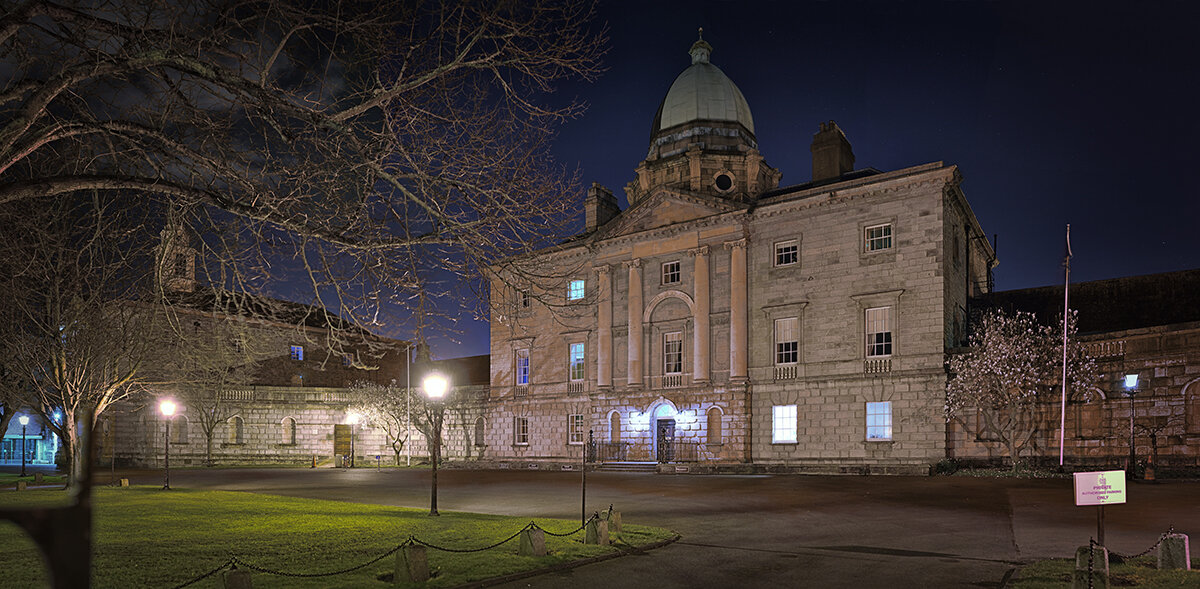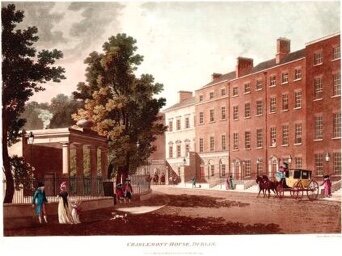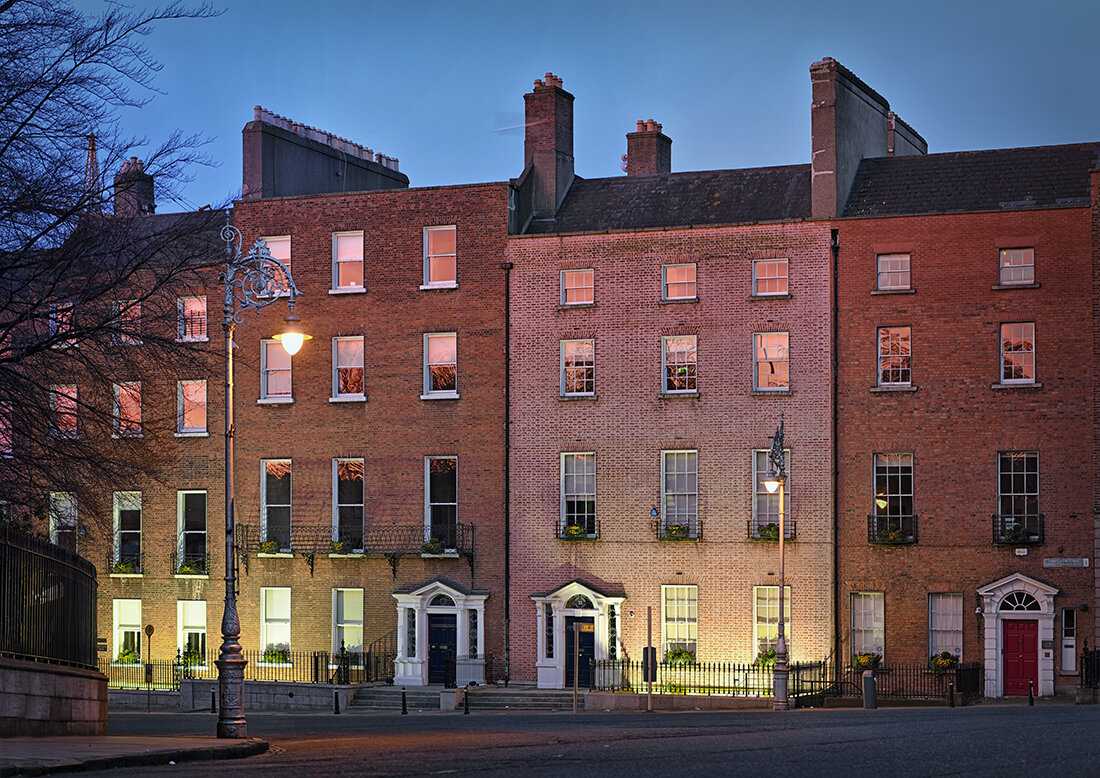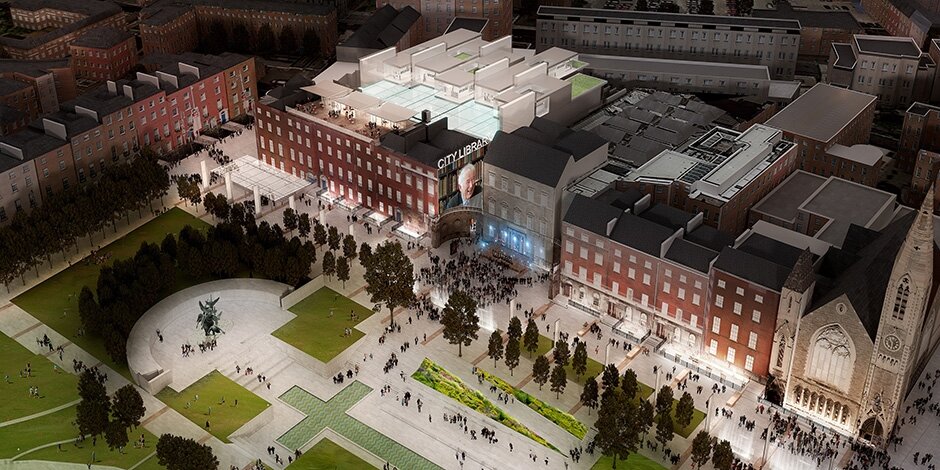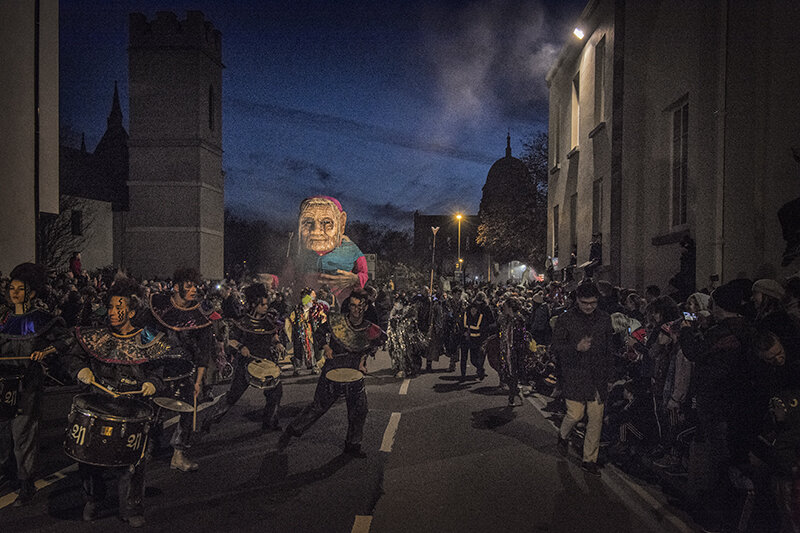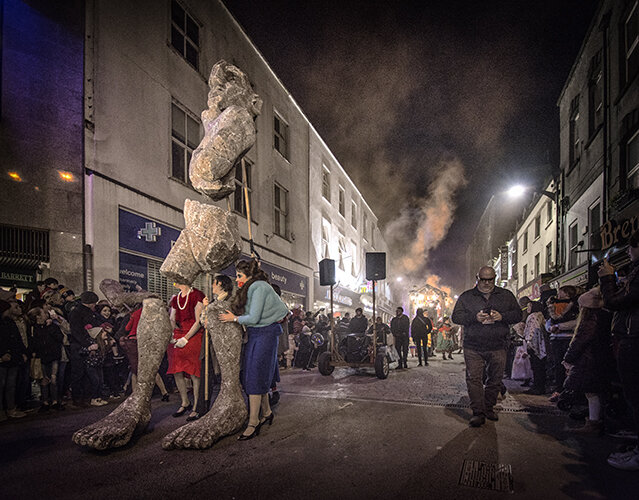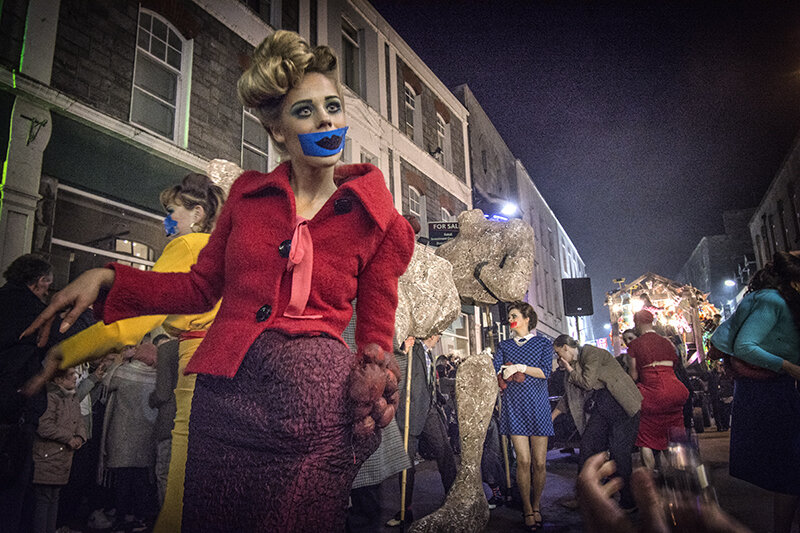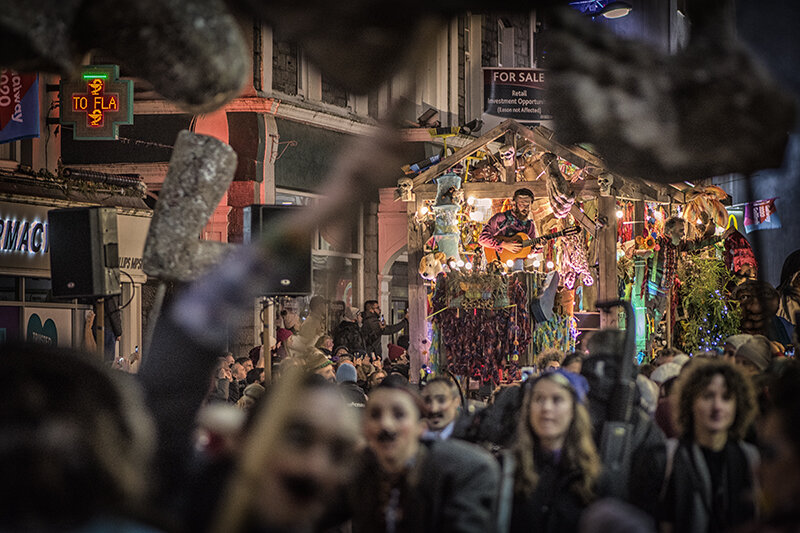Named after the Dublin author James Joyce whose story “The Dead” is set in No. 15 Usher’s Island, on the south side of the Liffey facing the bridge.
Looking south, with 15 Usher’s Island on the right - taken Jan. 2017
The Joyce Bridge is a single span structural steel design, 40m (131 ft) long, with the deck supported from two outward angled arches, one each side of and above the deck. It is supported on piles in the river and adjacent to the quay walls.
Looking south from Blackhall Place
The deck provides double two-lane vehicular movement in each direction, and a pedestrian walkway is cantilevered from the deck on the outside of angled stringer supports between the deck and arches. This physical barrier between the pedestrians and traffic and the wide walkway (varies from 3 to 6m) are designed to attract people onto the bridge to view the city landscape and the River Liffey. The deck width between railings is 30m (98.5 ft).
Sketch Design by Santiago Calatrava - Dublin City Council
Santiago Calatrava, the renowned Spanish Architect & Engineer, was appointed to design the bridge in 1998. The contract was commenced in April 2001 for a tender sum of IR£4.4m (€5.6m). Irishenco Construction Ltd were the main contractor and Harland & Wolff of Belfast the steel fabricator. The superstructure was fabricated in Belfast and assembled by welding on a temporary deck in the river.
Looking south, with No. 15 Usher’s Island in the background
Considerable delays were incurred as a result of extended piling due to a buried river and welding complexities with the steel fabrication. As a result, the actual construction time was 26 month with the bridge opening, appropriately on Bloomsday, the 16th June 2003.
Looking south, with No. 15 Usher’s Island in the background
This was one of two Bridges designed by Calatrava for Dublin, the other being the Samuel Beckett bridge, located further downstream, in the docklands.
The Samuel Beckett Bridge, by Santiago Cslatrava. Opened in 2009
Long before a bridge ever spanned the Liffey in this location, things looked very different.
Excerpt from John Rocque’s map of Dublin, 1756
Oxmantown Green, the last of the remaining undeveloped medieval commons in the north-west of the city still survived, with its artillery grounds, associated with the nearby barracks, and bowling green, dating from 1664. Where the Joyce Bridge is now was a small slipway known as the Gravel Walk Slip
View of the city from the Wooden Bridge (Bloody Bridge), 1698, by Francis Place - The National Gallery of Ireland
Intriguingly, we can see in Rocque’s map numerous yards with what looks like timber stacked in them. I can imagine boats arriving here from throughout the country, off-loading timber which would then go on to be used in the construction of Georgian Dublin,
Map of Dublin 1837-42 - Ordinance Survey Ireland
By the mid-19th century the Gravel Walk Slip has been filled-in, and Oxmantown Green had been bisected by Blackhall Place and the associated construction of the Blue Coat Hospital School. The original school, built further east towards Smithfield, was deemed to be in danger of collapsing by the early 1770s. Thomas Ivory, Master of the School of Architectural Drawing in the Dublin Society prepared a set of thirteen drawings in 1776 for a new design. In December 1783, the building was opened and the first boys moved into the school.
The Law Society, Blackhall Place - formally the Blue Coat Hospital School, 1773, by Sir Thomas Ivory
The Commissioners for making Wide and Convenient Ways, Streets and Passages in the City of Dublin was established by an Act of Parliament in 1757. The Commission had extensive powers with the authority to acquire property by compulsory purchase, demolish it, lay down new streets and set lots along the new streets to builders for development.
Plan indicating the proposed extension south of Blackhall Place to the Quays by the Wide Street Commissioners, date unknown - Dublin City Council
The Commission had an enormous influence on the city, creating Parliament Street, Westmoreland Street and D'Olier Street, widening Dame Street, building Carlisle Bridge (now O'Connell bridge), and extending lower Sackville Street (O'Connell) and Blackhall Place south to the Liffey, giving us the present-day street arrangement. The Commission was abolished under the Dublin Improvement Act of 1849 with the final completion of its work in 1851.
Map of Dublin, 1888-1913 - Ordinance Survey Ireland
The addition of the Joyce Bridge made the final connection linking Blackhall Place to the south of the Liffey, sitting right alongside Mellows Bridge, the 'old man of the river', the longest surviving structure of all the Liffey bridges.
Looking west from Mellows Bridge, with the Joyce Bridge in the background
As an aside, on my way home from one of my recent rambles, I spied a fox making its way across…











